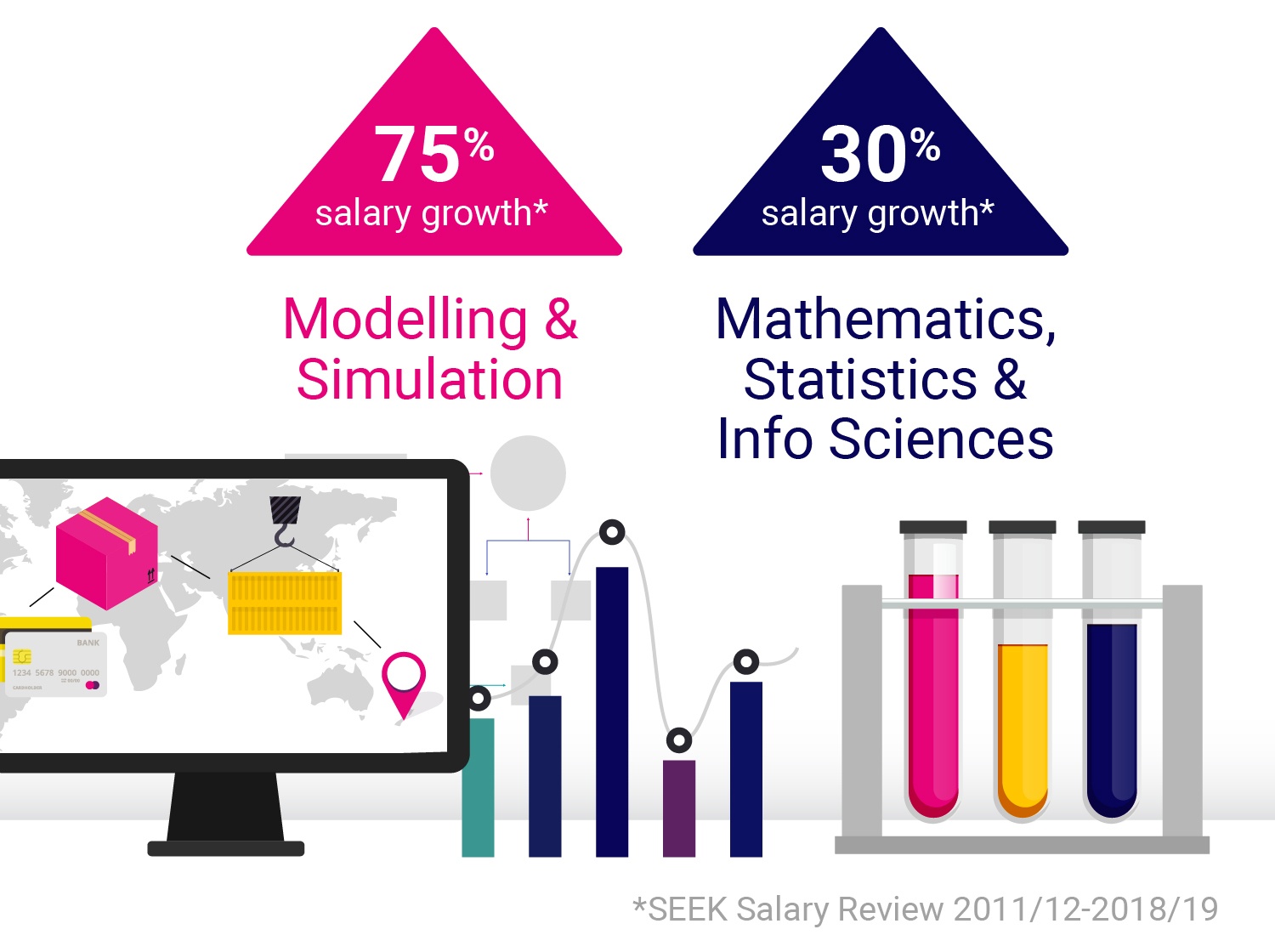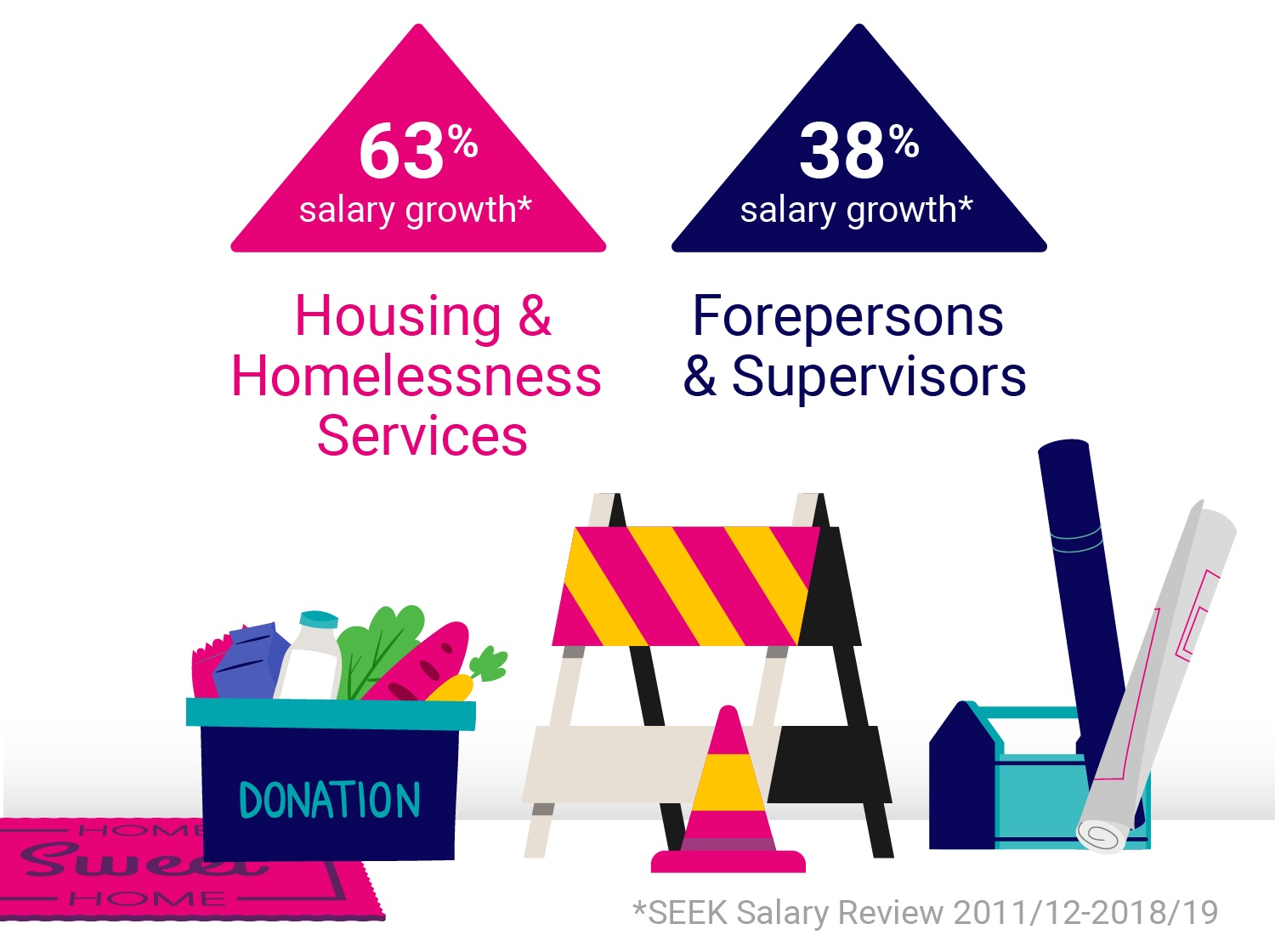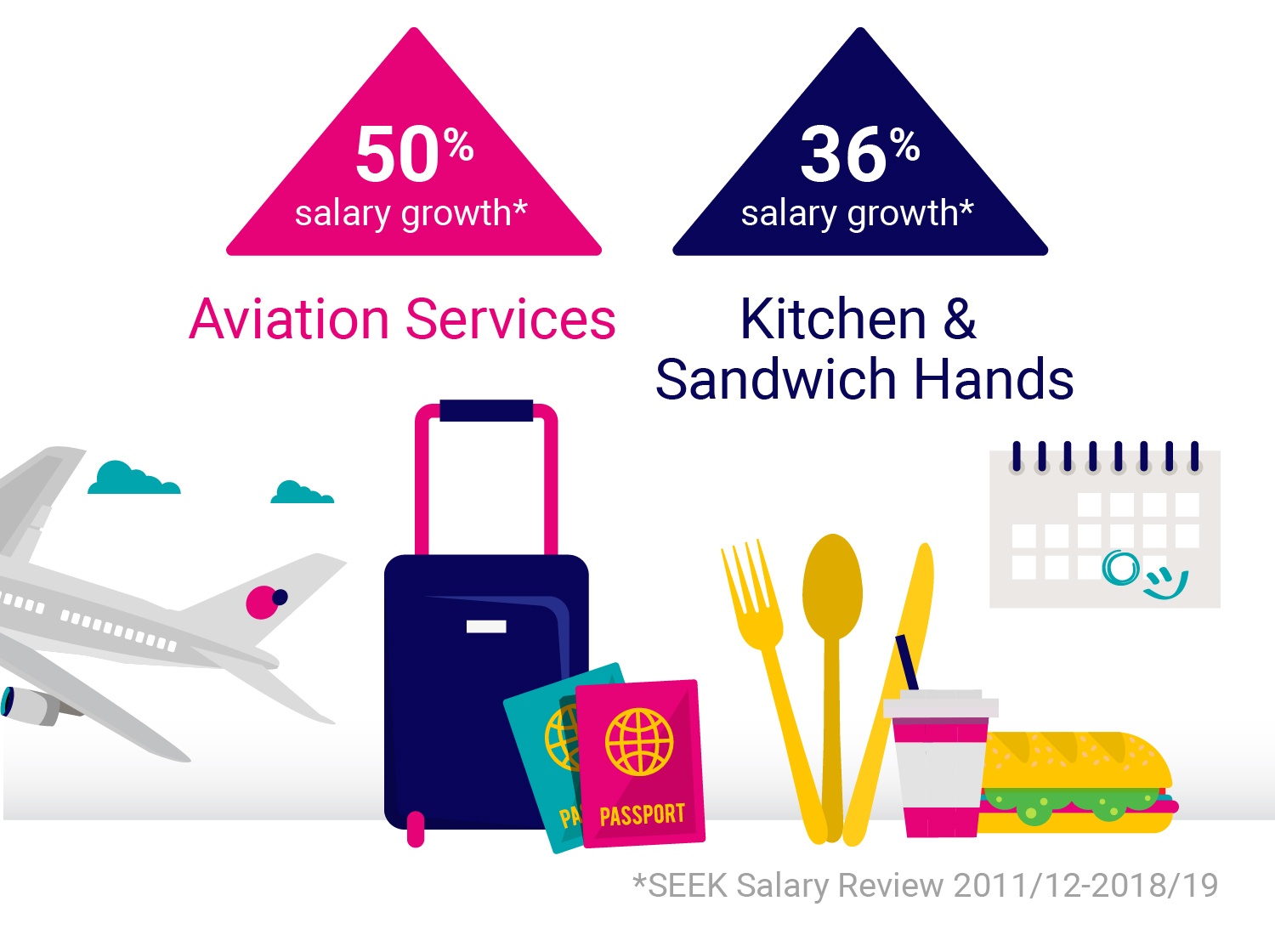Shaped by local and global forces, some jobs have rocketed in value while others tumbled. As we kick off 2020, SEEK’s Senior Employment Trends Analyst, Leigh Broderick looks back at the 20 best and 20 worst performing salaries and shares his insights into where New Zealand salaries may head in the decade to come.
Three trends driving the top performers
STEM burns bright at number one


Few hirers would be surprised to see careers in science, technology, engineering and mathematics, or STEM, doing so well in our salary data. However, they might be surprised that the number one, Modelling & Simulation, recorded an impressive salary rise of 75%. Mathematics, Statistics & Information Sciences came in at number 16 with a rise of 30%, while a 27% increase put Biological & Biomedical Sciences, where much of the growth has been driven by food technology, at number 19. As a country, we place enormous emphasis on farming and agriculture, and food technology is an important subset of that. As to the future, it will be interesting to see whether the growing number of STEM graduates entering the workforce has a long-term impact on salaries.
Homing in on the need for domestic housing


According to the Organisation for Economic Co-operation and Development (OECD), New Zealand has one of the highest rates of homelessness. Employers will be heartened to see Housing & Homelessness Services in second place, with a salary increase of 63%. Prime Minister Jacinda Ardern has pledged almost $200 million to provide housing for 2,700 long-term homeless people in the 2019 budget. More broadly, demand for domestic housing has been fuelling the Construction industry, which helps explain why Forepersons & Supervisors and Architectural Draftspeople both made the top eight, with salary rises of 38% and 35% respectively.
Tourism flying high


Tourism is one of New Zealand’s biggest exports, and with visitor numbers growing by over 50% in the past 10 years, it shows no signs of slowing down. Demand for domestic and international travel has also been stimulated by lower airfares. This has no doubt helped drive the 50% rise in salaries for workers in Aviation Services and the 36% rise for those who work for airlines. Kitchen & Sandwich Hands are also earning 36% more, which suggests both tourists and locals are spending more. That could be good news all round for the one in seven New Zealanders employed directly in Tourism.
New Zealand's top 20 salary gains
| RANK
|
INDUSTRY
|
ROLE TYPE
|
2018-2019
|
%
|
|---|---|---|---|---|
| 1 | Science & Technology | Modelling & Simulation | $94,210 | 75% |
| 2 | Community Services & Development | Housing & Homelessness Services | $74,043 | 63% |
| 3 | Healthcare & Medical | Optical | $92,362 | 53% |
| 4 | Manufacturing, Transport & Logistics | Aviation Services | $81,310 | 50% |
| 5 | Construction | Foreperson/Supervisors | $99,774 | 38% |
| 6 | Hospitality & Tourism | Airlines | $63,450 | 36% |
| 7 | Hospitality & Tourism | Kitchen & Sandwich Hands | $41,785 | 36% |
| 8 | Design & Architecture | Architectural Drafting | $77,703 | 35% |
| 9 | Manufacturing, Transport & Logistics | Public Transport & Taxi Services | $60,568 | 35% |
| 10 | Real Estate & Property | Retail & Property Development | $120,643 | 34% |
| 11 | Insurance & Superannuation | Risk Consulting | $104,046 | 34% |
| 12 | Design & Architecture | Web & Interaction Design | $95,795 | 33% |
| 13 | Insurance & Superannuation | Fund Administration | $62,631 | 32% |
| 14 | Mining, Resources & Energy | Natural Resources & Water | $102,291 | 32% |
| 15 | Trades & Services | Gardening & Landscaping | $52,193 | 31% |
| 16 | Science & Technology | Mathematics, Statistics & Information Sciences | $100,861 | 30% |
| 17 | Engineering | Systems Engineering | $97,682 | 28% |
| 18 | Banking & Financial Services | Client Services | $68,346 | 28% |
| 19 | Science & Technology | Biological & Biomedical Sciences | $84,571 | 27% |
| 20 | Legal | Tax Law | $115,546 | 27% |
Source: SEEK Salary Review, annual full-time salary averages by role type, 2011/12-2018/19, SEEK.
Three forces shaping downward moves
Mining finds itself in a hole
Downscaling of coal extraction and transition to renewable energy sources, especially as part of the electricity generation mix, have been limiting employment opportunities for miners. This is reflected in our salary data, where Mining, Resources & Energy claimed a dispiriting eight of the 20 lowest places, including the bottom three. The lowest, Mining - Exploration & Geoscience, fell by 46%. Future growth in the industry is likely to be limited by the Crown Minerals Amendment Bill passed by Parliament at the end of last year, which puts an end to new offshore oil and gas exploration.
ICT drop signals changes
It may surprise employers that Information & Communication Technology (ICT) appears twice in our list of poor performers. Salaries in Sales – Pre & Post declined by 10% while, in Telecommunications, the slide was even more pronounced at 21%. The first data point suggests that IT vendors are maintaining a local presence for the sales side of the business but supporting existing customers offshore, through regional hubs in Australia and Asia. The second data point reflects a shift in the mix of roles from engineering, specialist and design to a higher proportion of telecommunication and fibre technicians, roles that generally tend to attract a lower salary. This may well be a result of the Ultra-Fast Broadband initiative moving from the design stage to implementation.
Legal eagles plunge and number crunchers stumble
The Legal and Accounting professions both appear twice in the lowest ranks. Salaries in Industrial Relations & Employment Law, Legal Practice Management and External Audit all fell by 7%, while those in Insolvency & Corporate Recovery dropped by 9%. Australasian Lawyer reports that these are both professions where automation is having an impact, as machines can now do much of the tedious manual labour, leaving professionals to focus on more productive and creative work.
New Zealand's 20 biggest salary falls
| RANK
|
INDUSTRY
|
ROLE TYPE
|
2018-2019
|
%
|
|---|---|---|---|---|
| 1 | Mining, Resources & Energy | Mining - Exploration & Geoscience | $74,021 | -46% |
| 2 | Mining, Resources & Energy | Mining - Processing | $71,250 | -31% |
| 3 | Mining, Resources & Energy | Mining - Drill & Blast | $78,125 | -29% |
| 4 | Advertising, Arts & Media | Promotions | $47,959 | -29% |
| 5 | Mining, Resources & Energy | Mining - Operations | $89,817 | -25% |
| 6 | Mining, Resources & Energy | Mining - Engineering & Maintenance | $101,435 | -23% |
| 7 | Information & Communication Technology | Telecommunications | $68,371 | -21% |
| 8 | Healthcare & Medical | Medical Specialists | $103,087 | -16% |
| 9 | Information & Communication Technology | Sales - Pre & Post | $105,468 | -10% |
| 10 | Accounting | Insolvency & Corporate Recovery | $81,057 | -9% |
| 11 | Accounting | Audit – External | $77,145 | -7% |
| 12 | Legal | Legal Practice Management | $91,477 | -7% |
| 13 | Human Resources & Recruitment | Recruitment - Agency | $68,102 | -7% |
| 14 | Insurance & Superannuation | Management | $105,230 | -7% |
| 15 | Legal | Industrial Relations & Employment Law | $93,019 | -7% |
| 16 | Mining, Resources & Energy | Management | $112,588 | -7% |
| 17 | Mining, Resources & Energy | Health, Safety & Environment | $100,937 | -6% |
| 18 | Human Resources & Recruitment | Management - Agency | $93,443 | -6% |
| 19 | Manufacturing, Transport & Logistics | Rail & Maritime Transport | $69,888 | -6% |
| 20 | Mining, Resources & Energy | Oil & Gas - Operations | $89,767 | -5% |
Source: SEEK Salary Review, annual full-time salary averages by role type, 2011/12-2018/19, SEEK.

